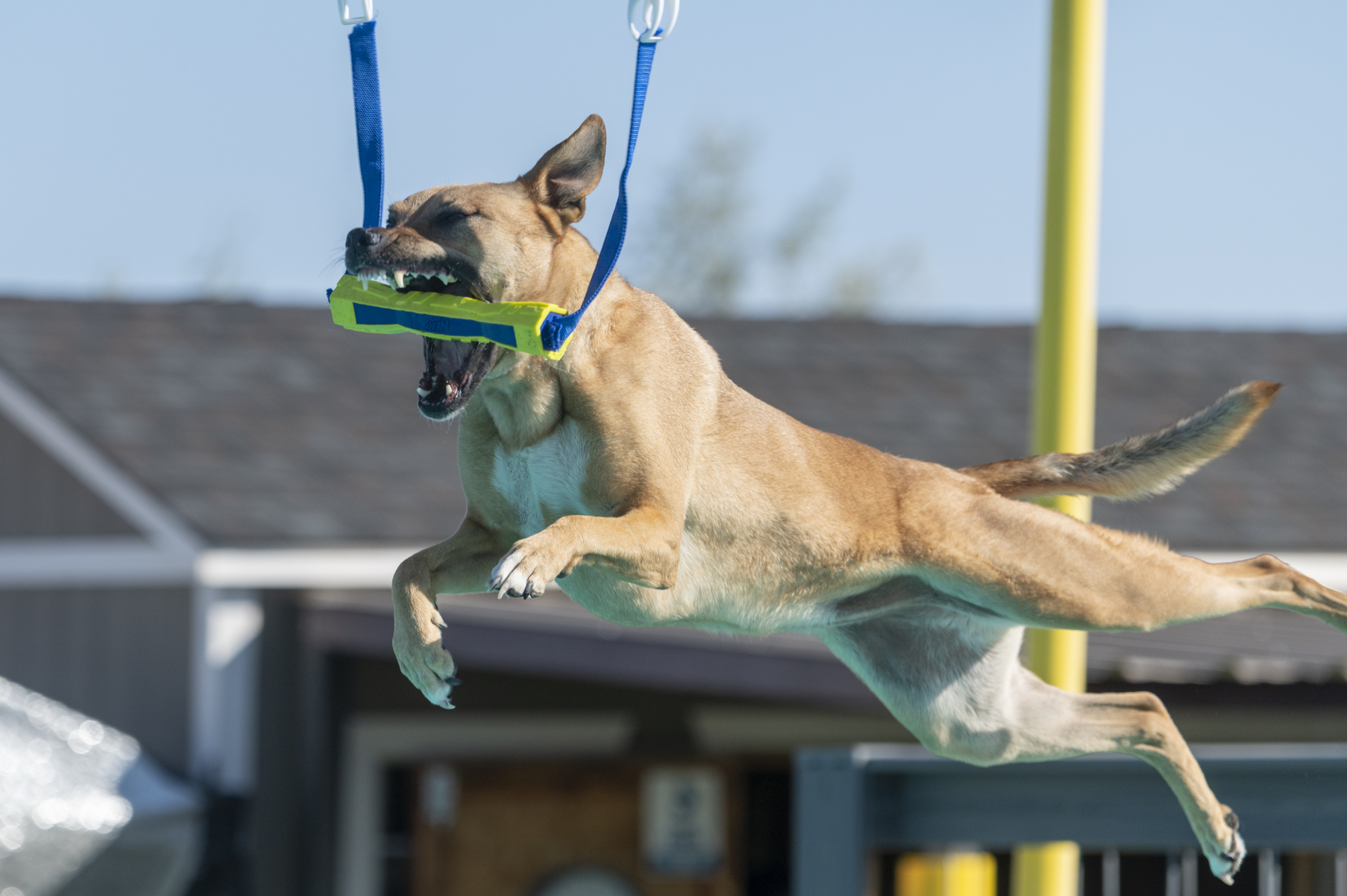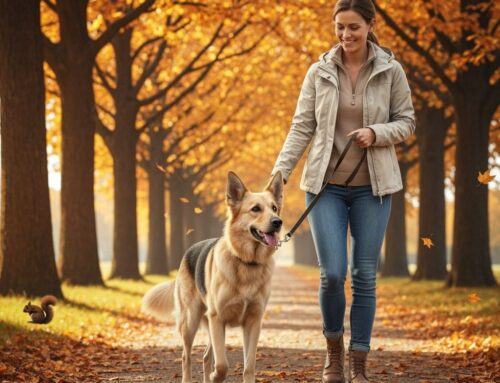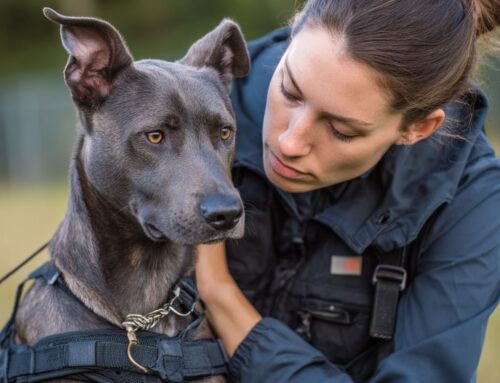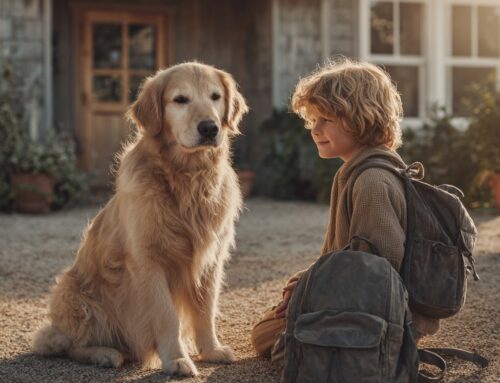Keeping your dog active is an important part of his or her health, but did you know that there are competitive sports your dog can participate in and even win prizes for?
Dog sports are an opportunity to keep your dog healthy and occupied, but they’re also a great way for you to bond with your pet and/or meet other like-minded pet parents who also have dogs that participate and compete in dog sports.
While some dog sports allow any and all dogs to compete, some are focused on specific breeds that perform certain activities best, based on their body size, shape and level of athleticism.
Here are some popular dog sports that are growing in terms of interest and excitement:
Dock Diving
Does your dog love to jump into a pool or lake for fun? If so, dock diving may be the perfect sport for them. With dock diving, dogs leap off a raised platform into water in order to retrieve a tossed toy. The dog that jumps the farthest in their category (usually broken out by size and experience) takes home a blue ribbon.
A sub-category of dock diving is air retrieval, where a dog must knock over or grab a toy that’s suspended four feet above the water. With each successful grab or knock-over, the toy is moved one foot farther from the jumping platform.
Almost any dog over six months old that isn’t afraid of water can compete in dock diving (check with your veterinarian if you have a brachycephalic breed — English or French Bulldogs, Pugs, Pekingese or Boston Terriers, for example, as these breeds may not be suitable for this sport). Water-loving breeds like Labrador or Golden Retrievers are naturals at dock diving!
Agility
Take away the water from dock diving, and you have a competitive agility course. Somewhat similar to show jumping with horses, agility jumping features long bars of adjustable heights that your dog runs up to and jumps over or tunnels through a tube. In some cases, dogs jump through suspended rings or tires.
Agility improves your dog’s running speed, body conditioning, maneuvering capability and ability to discriminate between heights. Many of these skills can carry over to dock diving and other dog sports, so agility can be a good place for them to start training.
The best thing about is that the equipment is lightweight and portable, so your dog can practice this sport almost anywhere.
Herding
Certain breeds of dogs have a natural ability to herd other animals — usually cattle, sheep or goats. These include Australian Cattle Dogs, Kelpies, Koolies, Border Collies, Welsh Corgis, English and Australian Shepherds and New Zealand Huntaways.
In competitive herding, dogs move other animals around a field or enclosed area as directed by their handlers. These can be called Trial or Test events. Many of these events take place in hilly farming areas of the U.S., Canada, U.K., Ireland, Australia, New Zealand and South Africa.
Competitive herding events have been broadcast on television, and winning herd dogs have sold at auction for more than $10,000.
Nosework
Nosework (sometimes called scentwork) is a sport designed to mimic professional detection dog work, which is why certain breeds of dogs like Beagles, Bloodhounds, Coonhounds, Labrador Retrievers and German Shepherds are especially suited for it. With nosework, a dog works with a handler to discover the source of a hidden target odor while ignoring distractions, such as toys or food. The dog alerts the handler and is rewarded with a treat.
Sample target odors include wintergreen, vetiver oil, thyme, pine, myrrh, clove birch and anise. Searches can be conducted within building interiors, building exteriors, vehicles and containers. In some cases, dogs must choose which one of multiple containers conceals a hidden object. In higher levels of nosework, multiple odors and scent sources are utilized.
There’s some evidence that suggests that nosework can help dogs with behavioral problems. Dogs that are afraid of people can begin to overcome this fear by working closely with a handler. Nosework has been shown to help reduce separation anxiety and improve obedience in dogs.
Schutzhund
“Shutzhund” is German for “protection dog,” and these sports test dogs’ obedience, tracking and protection skills. They’re open to any dog, but traditionally protective breeds such as German Shepherds, Belgian Malinoises, Dobermanns and Rottweilers tend to dominate the field. There’s a strong correlation between Schutzhund tasks and police dog work.
In obedience tests, dogs are ordered to heel. Simulated or starting gun shots test dogs’ reactions to loud noises. Other tests include retrieving and “send-outs,” whereby a dog is directed to run away from a handler quickly in a straight line and then lie down on command.
In tracking tests, a “track layer” drops several small items along a path, and the dog must follow the path closely while being leashed to its handler. Upon discovering each dropped item, the dog must lie down with the object between its front paws. Dogs are scored based on how carefully they follow the path and if the items are indicated correctly.
Protection tests measure dogs’ courage in protecting their owners and their ability to take direction while doing so. In each test, a “helper” (a simulated attacker) wears a padded sleeve and hides in one of several “blinds” on a competition field. Dogs are directed to search all the blinds and bark when they find the helper. The dog must prevent the helper from moving and/or escort them to the judge of the contest. Along the way, the helper may simulate an attack on the dog or its handler, and the dog must stop biting the padded sleeve. When the handler calls out for the dog to unleash its grip, it must release the sleeve. The sport is all about courage and control peppered with nonstop excitement for spectators.
Lure Course
Lure coursing is a sport where dogs chase a mechanically operated lure. It’s aimed at purebred sighthound breeds, such as Greyhounds, Wolfhounds, Deerhounds, Windhounds and Whippets. In lure coursing, a lure is moved across a 600- to 1,000-yard field along a specific path. A minimum number of turns simulates a jack-rabbit or hare changing course in the act of running away. Obstacles and jumps are often incorporated. Dogs are judged on their speed, agility, endurance, enthusiasm and ability to follow the lure.
Before dogs can run in some competitions, they must get certified by being tested for strictly (“cleanly”) following the lure and not interfering with other dogs. In Europe, some competitions require dogs to be licensed for lure coursing.
In general, dogs must be one year old to compete in lure coursing, as turns on a field can be tough on developing canine joints, and competing regularly before the age of one year old can cause joint problems later in a dog’s life.
If you want your dog to get involved in dog sports, there are many resources on the web to find out where and when local competitions are held. The American Kennel Club has much detailed information online about dog sports.








